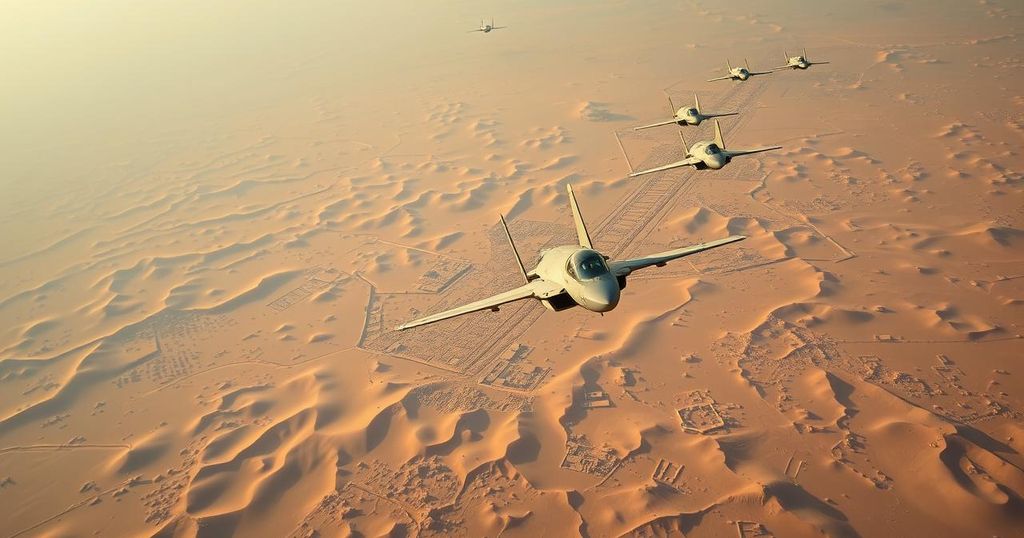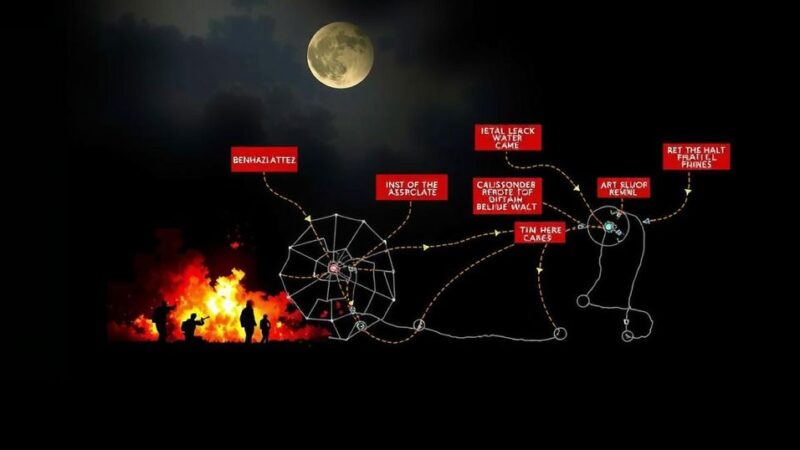The U.S. executed airstrikes on Iran-backed Houthis in Yemen using B-2 bombers, targeting five weapons storage facilities essential to operations against vessels in the Red Sea and Gulf of Aden. This action, authorized by President Biden, reflects a significant tactical escalation amidst ongoing regional tensions, with Secretary Austin reinforcing a commitment to act against Houthi aggression and protect maritime interests.
On Wednesday evening, the United States conducted airstrikes in Yemen against the Iran-supported Houthi movement, employing B-2 stealth bombers to target five covert weapons storage facilities. These facilities, as reported by three defense officials, contained advanced conventional weapons utilized for assaults on military and civilian vessels operating in crucial waterways such as the Red Sea and the Gulf of Aden. In a statement, Defense Secretary Lloyd Austin noted, “This was a unique demonstration of the United States’ ability to target facilities that our adversaries seek to keep out of reach, no matter how deeply buried underground, hardened, or fortified.” This operation signifies the inaugural usage of the B-2 Spirit long-range bombers against the Houthis—a substantial upgrade in military capability compared to previous strikes that predominantly involved fighter jets. Secretary Austin authorized the assault under the direction of President Joe Biden, aiming to “further degrade” Houthi operational capacity following prolonged assaults on international and U.S. maritime interests in the region. He emphasized that these facilities were integral for weapon components intended for attacks on vessels throughout the Middle East. Austin reiterated the U.S. commitment to holding the Houthis accountable for their aggressive actions, stating, “We will continue to make clear to the Houthis that there will be consequences for their illegal and reckless attacks.” This particular strike comes amidst heightened tensions in the Middle East, where Israel is preparing for possible retaliatory actions against Iran, coinciding with ongoing conflicts involving Hezbollah and Hamas. The recent airstrike, which occurred early Thursday morning local time, reflects the ongoing cycle of retaliatory assaults between the Houthis and U.S. forces, highlighting the latter’s defensive measures against a barrage of attacks targeting shipping and naval operations. Notably, while previous operations involved cooperative efforts with the United Kingdom, this particular initiative was executed solely by U.S. forces, including assets from both the Air Force and Navy. Over the past year, the U.S. has undertaken a series of actions aimed at neutralizing Houthi drone and missile threats to safeguard maritime safety. Earlier reports indicated that Houthi forces had launched extensive missile attacks against U.S. naval vessels, although Deputy Pentagon Press Secretary Sabrina Singh affirmed that none struck American ships. The Houthis have claimed to launch these strikes in support of Hamas and Hezbollah, with persistent attacks leading to full-scale military responses from the U.S. and its allies. The United States maintains a significant military presence in the region, encompassing a variety of naval and aerial assets as a countermeasure following escalated tensions initiated by Hamas’s actions in Israel. The developments in Yemen underline the continuing complexity of the geopolitical landscape, as both the U.S. and its adversaries vie for control and influence over vital strategic routes and territories.
The situation in Yemen has been dire, with the Houthis—backed by Iran—conducting repeated assaults on maritime shipping lanes, prompting a strong response from the United States. The Houthis’ aggressive actions have raised alarms internationally, especially given the intricate geopolitical dynamics involving regional players like Iran, Israel, and various militant groups. The employment of advanced military technology by the U.S., particularly the B-2 stealth bomber, signals a significant shift in operational capabilities intended to counter these threats effectively. The U.S. response is also reflective of broader strategic interests in maintaining stability and security in the Middle East.
In conclusion, the U.S. airstrikes against the Iran-aligned Houthis in Yemen mark a critical escalation in military responses to ongoing threats in the region. By utilizing sophisticated B-2 stealth bombers, the U.S. demonstrates its engineering and tactical capabilities to address covert militaristic challenges posed by non-state actors. As tensions continue to escalate within the broader geopolitical framework of the Middle East, these military actions reiterate the commitment of the U.S. to protect its maritime interests and warn adversaries of the repercussions stemming from aggressive acts.
Original Source: www.cnn.com






